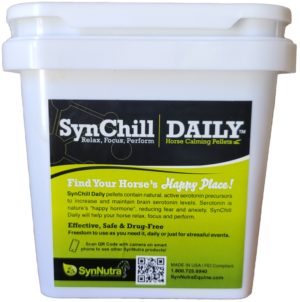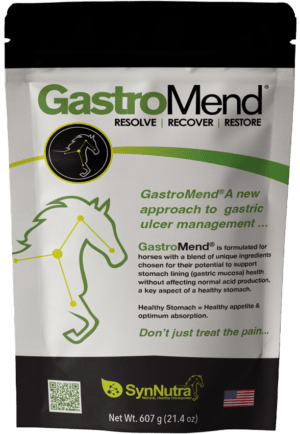RedoxEq – Horse metabolic support supplement
Metabolic Support For Horses With Elevated GGT
- Super potent antioxidant for equine athletes
- Combats oxidative stress in performance horses
- Fights elevated GGT in performance horses
- Metabolic support for horses
- Contains real, potent, natural free radical scavengers
- Contains no drugs, banned or controlled substances
- No withdrawal times
- Non-prescription
If your horse has elevated GGT, your horse needs RedoxEq
Available in two sizes
Let's start with the bottom line. If your horse has elevated GGT, your horse needs RedoxEq™. Keep reading to learn why.
RedoxEq™ contains real, potent, natural free radical scavengers to support cellular metabolic homeostasis in redox compromised horses. Horses with elevated GGT (gamma-glutamyl transferase) have markedly diminished capacity to process the byproducts of energy production. Without the body's normal antioxidants (free radical scavengers), these biochemical processes quickly lead to fatigue and muscle damage. The antioxidants in RedoxEq provide the needed free radical scavengers to prevent fatigue and allow equine athletes to perform to the best of their abilities.
RedoxEq™ contains no drugs, banned or controlled substances and there are no withdrawal times for the ingredients. For specific rules and guidelines regarding dietary supplement use, contact the authorities in your specific jurisdiction.
Ingredients: Astaxanthin, N-Acetylcysteine, Glycine
###
Read Blog post below:
Elevated GGT And Oxidative Stress In Thoroughbred Racehorses Equine Oxidative Stress Syndrome
Sep 23, 2019 | Oxidative Stress
GGT (gamma glutamyl transferase) elevation in racehorses is associated with a sudden onset of exaggerated poor performance. Since affected horses outwardly appear healthy and normal, other than their inability to work more than½ or ⅝of a mile, this GGT-associated equine oxidative stress syndrome often goes unrecognized and unmanaged.
The correlation of poor performance to elevated GGT levels is beginning to be recognized by the Thoroughbred racing industry. Traditionally, GGT has been used as an indicator of liver disease (biliary stasis, cancer).If an abnormal level of the enzyme were found in a horse’s blood work, it was dismissed as insignificant by diagnosticians. In recent years however, several high-profile racehorses have been plagued by inexplicable bouts of poor performance, and were found to have elevated GGT. Given the mounting evidence, the veterinary community has begun to investigate and conduct research studies on this formerly dismissed enzyme elevation.
It is now clear that GGT is an indicator and participant in equine oxidative stress syndrome.
Relevant Questions
What is GGT?
GGT (gamma glutamyl transferase) is a cell surface enzyme distributed throughout the body. It has historically been measured as an indicator of liver disease, (bile stasis in particular) but it is found in all somatic cells. GGT transfers amino acids across the cell membrane and plays a major role in maintaining glutathione, the body’s master antioxidant. When GGT levels are abnormally high, the enzyme degrades glutathione, the body’s primary antioxidant, causing a depletion of this critical peptide. Without its key antioxidant to protect it, the body undergoes oxidative stress.
What is oxidative stress and why does it affect performance?
Oxidation is a necessary biochemical process that provides energy for cellular function, but it also forms a small amount of destructive reactive species as byproducts. Reactive oxygen and nitrogen species, or “free radicals” as they are commonly known, are unstable and cause cell damage. Once formed, they need to be transformed as quickly as possible to prevent degenerative changes. Antioxidants, or “free radical scavengers,” are the primary defenders which curb free radicals, neutralizing the threat they pose to cells and tissues. When the body has enough antioxidants to stabilize the free radicals produced by oxidation, it is balanced. When the body is lacking in antioxidant levels, it suffers from oxidative stress.
When a horse endures oxidative stress, it is experiencing a biochemical attack on its cells, lipids, proteins—even its DNA! Chronic oxidative stress has been linked to aging, infertility, metabolic disorders, and even cancer. Even in its early stages, when only fatigue is present, it is an imbalance that needs to be corrected as quickly as possible for the overall health and longevity of the horse.
How do horses get elevated GGT?
The exact cause of equine oxidative stress syndrome is still unclear. A group of talented veterinarians and scientists are currently working on some fascinating research regarding GGT. Hopefully in the coming few years, these studies should provide veterinarians and horse owners with new insights. Just remember that with any new area of exploration we will likely get a lot more questions before we get all the answers.
Some current theories as to why horses develop high levels of GGT include:
Viruses: There are a few newly discovered viruses associated with the elevation of GGT. From an epidemiological perspective, the viral theory fits the occurrence patterns of new cases. However, it doesn’t necessarily explain all of the metabolic disturbances associated with the syndrome.
Over training: Conceptually, over training could possibly explain the metabolic abnormalities associated with elevated GGT. However, most of the diagnosed horses are not trained any differently than horses that have normal GGT levels. Moreover, some of the newly diagnosed cases of elevated GGT have been racing and intensely training for years with no previous elevation in their medical histories.
Environmental factors: GGT is an inducible enzyme, meaning that increases in GGT production can be stimulated by other biological factors. In people, GGT elevation is associated with various diseases such as diabetes, liver cancer, kidney disease and obesity. It is also thought that certain nutritional ingredients can stimulate overproduction of the enzyme.
How can it be prevented?
Determining the exact cause(s) of elevated GGT in the racehorse will go a long way toward helping veterinarians and researchers prevent the condition. Practicing good hygiene/sanitation and preventing cross-contamination between horses is important to prevent the spread of all infectious diseases. In the case of viral infections, dipping bits and lead chains, individual water buckets, personnel hygiene, etc. will help prevent spread.
Keeping good, detailed records of horses’ management practices and noting all inexplicable changes in performance may provide good information to researchers when new cases are discovered. Any association with changes in feed, bedding, weather, training, etc. should be noted.
How is it treated?
Horses with elevated GGT are more “managed” than treated at this time. For the past two years, new cases supplemented with a blend of potent antioxidants have been able to perform very well, at or near their previous levels. Prior to use of these supplements, it was rare for a horse to race competitively with elevated GGT.
Treatment of this condition is geared toward finding and alleviating the exact initial cause of GGT elevation. While antioxidant supplementation is not a specific treatment, boosting the body’s ability to combat oxidative stress has proven to be very helpful in a previously helpless situation.
Additional information
| Weight | N/A |
|---|---|
| Dimensions | 6.5 × 5 × 4 in |
| SERVINGS |






